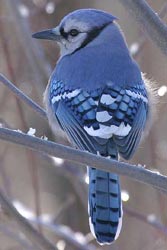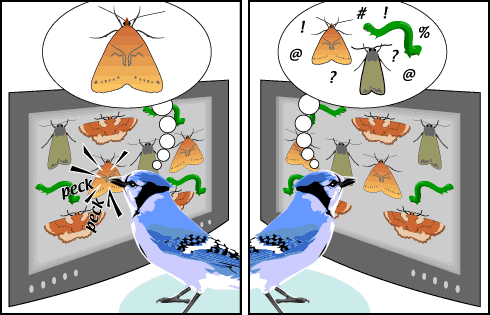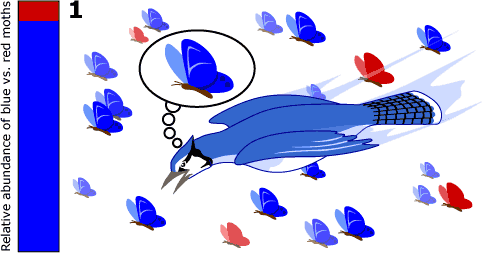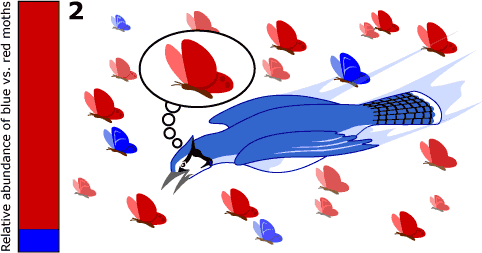
Reuven Dukas at McMaster University and Alan Bond and Alan Kamil at the University of Nebraska have found that blue jays and other organisms sometimes have trouble dividing their attention among more than one task, such as looking for more than one type of prey at the same time.
They trained blue jays to look at a computer screen and search for virtual moths, which looked similar to the birds’ natural prey. Generations of moths were simulated based on which moths the blue jays were able to identify and “kill.” Those that escaped the blue jays went on to produce offspring for future generations that were simulated in this experiment.
When the blue jays only had to look for just one kind of moth (a single search image), they were efficient at finding their prey. However, when they had to look for several types of prey at once (multiple search images), they were less efficient feeders.
Bond and Kamil also observed that blue jays maintained a search image for the prey type they encounter the most often. This promoted the evolution of diversity in moth appearance. To understand how this works, imagine that jays are searching for blue moths…
Red moths become more frequent as the jays pick off the blue ones and the red ones reproduce. But as red moths become the most common morph in the population, the jays switch to searching for red moths…
This drives down the frequency of red moths and lets the blue moths increase in frequency. Both red and blue morphs (and any other colors that pop up) are maintained in the population.
Get tips for using research profiles, like this one, with your students.



